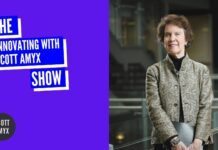ChatGPT has revolutionized conversational AI with its remarkable ability to generate human-like text responses. However, its evolution doesn’t stop there. Recent advancements have pushed ChatGPT beyond text-based interactions, enabling it to engage in multimodal conversations. We explore the evolution of ChatGPT from text-based to multimodal interactions, unlocking new possibilities for richer and more immersive conversational experiences.
Text-based Conversations
The initial versions of ChatGPT primarily focused on text-based conversations. Users could input text prompts or questions, and ChatGPT would generate text responses. This laid the foundation for natural language understanding and generation, allowing users to engage in dynamic and context-aware conversations.
Image Prompt Integration
The evolution of ChatGPT introduced the integration of image prompts. Users can now provide images as input, allowing ChatGPT to analyze and respond based on the visual information. For example, users can show images of objects, scenes, or even handwritten text, and ChatGPT can generate relevant and context-specific responses.
Voice Integration
Building upon its text and image capabilities, ChatGPT has expanded to include voice integration. Users can now engage in spoken conversations with ChatGPT, transforming the interaction from written to oral communication. This advancement enhances accessibility and provides a more natural and intuitive conversational experience for users.
Video Prompt Integration
The evolution of ChatGPT has also extended to video prompt integration. Users can now provide video clips as input, enabling ChatGPT to analyze the visual and auditory information simultaneously. This multimodal approach opens up opportunities for more comprehensive and context-aware responses, as ChatGPT can leverage both visual and auditory cues in generating its replies.
Contextual Understanding Across Modalities
With multimodal conversations, ChatGPT has the capability to understand and generate responses that encompass various modalities simultaneously. For example, when given an image prompt followed by a text-based question, ChatGPT can analyze the visual content and incorporate the question’s context to provide more accurate and relevant responses.
Enhanced User Experience and Immersion
The evolution of ChatGPT into multimodal interactions significantly enhances the user experience and immersion. Users can now have more natural and fluid conversations that encompass not only text but also images, voice, and video. This multimodal approach brings the conversation closer to real-life interactions, enabling richer and more engaging experiences.
Applications and Future Possibilities
The integration of multimodal capabilities in ChatGPT opens up exciting possibilities across various domains. For example, in customer support, users can share images or videos of product issues, allowing ChatGPT to provide more precise troubleshooting instructions. In education, multimodal conversations can enhance interactive learning experiences, combining text, images, and voice interactions. The potential applications extend to fields such as healthcare, e-commerce, entertainment, and more.
The evolution of ChatGPT from text-based to multimodal conversations represents a significant advancement in conversational AI. By incorporating images, voice, and video prompts, ChatGPT expands its understanding and generation capabilities across multiple modalities. This evolution enhances the user experience, immersing them in more natural and engaging conversations. As ChatGPT continues to evolve, its multimodal capabilities will unlock new possibilities, transforming the way we interact with AI and enabling more intuitive and context-aware conversations in various domains.
Book Scott Today
Book Scott to keynote at your next event!
Managing Partner at Astor Perkins, TEDx, Top Global Innovation Keynote Speaker, Forbes, Singularity University, SXSW, IBM Futurist, Tribeca Disruptor Foundation Fellow, National Sloan Fellow, Wiley Author, TechCrunch, Winner of Innovation Awards.


















